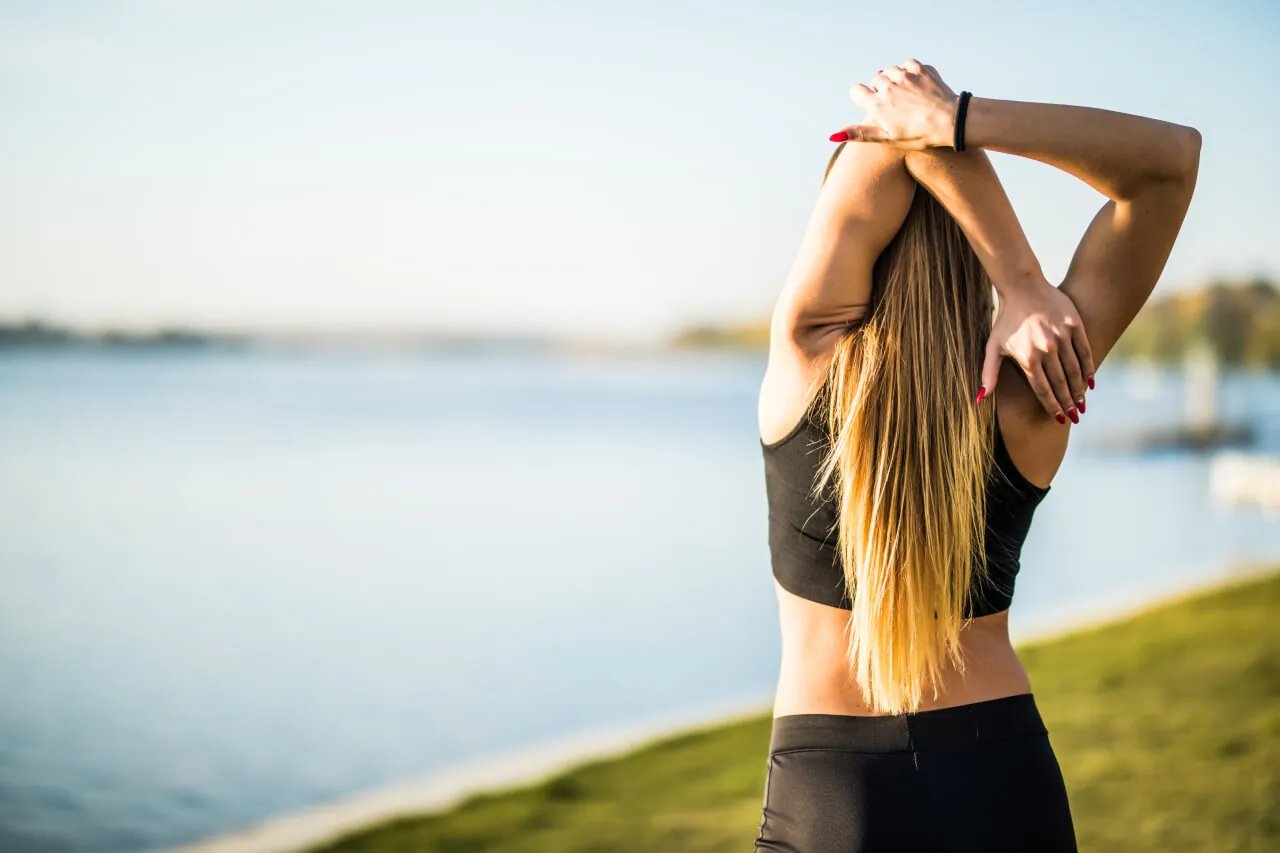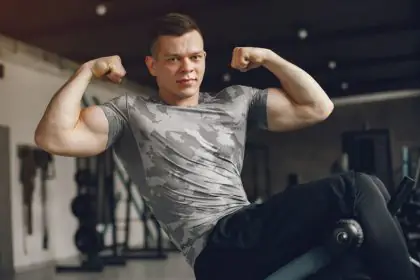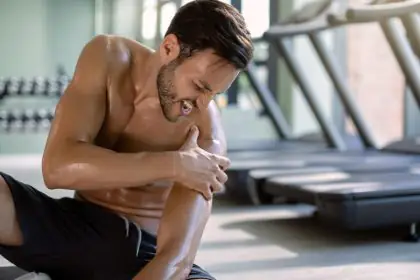Joint stiffness is a common symptom of many conditions that affect the joints, such as arthritis, bursitis, lupus, and more.
Do you often wake up with stiff joints that make it hard to move or do your daily activities?
Do you feel pain, swelling, or cracking sounds when you bend or flex your joints?
If so, you are not alone.
Many people experience joint stiffness at some point in their lives, but the reasons and severity may vary depending on various factors.
It can also be caused by lifestyle factors, such as age, weight, posture, and physical activity.
In this blog post, we will explore some of the possible causes of joint stiffness, how to treat them, and how to find relief with natural remedies.
What are the possible causes of joint stiffness?
Joint stiffness is the feeling of reduced or limited movement in one or more joints. It can affect any joint in the body, but it is more common in the knees, hips, fingers, neck, and back.
Joint stiffness can be mild and temporary, or severe and chronic. It can also be accompanied by other symptoms, such as pain, inflammation, redness, warmth, or deformity.
There are many possible causes of joint stiffness, but some of the most common ones are:
Arthritis
Arthritis is a group of diseases that cause inflammation and damage to the joints.
There are many types of arthritis, but the most common ones are osteoarthritis (OA) and rheumatoid arthritis (RA).
OA is caused by the wear and tear of the cartilage, the cushion that protects the bones in the joints.
RA is an autoimmune disease, where the immune system attacks the lining of the joints.
Both OA and RA can cause joint stiffness, especially in the morning or after periods of inactivity.
They can also cause pain, swelling, and reduced range of motion. According to the Centers for Disease Control and Prevention (CDC), about 32.5 million Americans have OA, and about 1.5 million have RA12.
Bursitis
Bursitis is the inflammation of the bursae, the small fluid-filled sacs that cushion the bones, tendons, and muscles around the joints.
Bursitis can occur due to overuse, injury, infection, or underlying conditions, such as gout or diabetes. Bursitis can cause joint stiffness, pain, swelling, and tenderness.
It can affect any joint, but it is more common in the shoulders, elbows, hips, knees, and ankles.
Lupus
Lupus is a chronic autoimmune disease, where the immune system attacks different parts of the body, such as the skin, joints, organs, and blood vessels.
Lupus can cause joint stiffness, pain, swelling, and deformity.
It can also cause other symptoms, such as fatigue, fever, rash, hair loss, and kidney problems.
Lupus can affect any joint, but it is more common in the hands, wrists, and knees4.
Age
As we get older, our joints tend to become stiffer due to the natural decline of the cartilage, the muscles, and the ligaments that support the joints.
The synovial fluid, the lubricant that helps the joints move smoothly, also decreases with age.
This can result in reduced flexibility, range of motion, and mobility.
Age-related joint stiffness can affect any joint, but it is more common in the spine, the hips, and the knees.
Weight
Being overweight or obese can put extra pressure and stress on the joints, especially the weight-bearing ones, such as the knees, the hips, and the ankles.
This can lead to the breakdown of the cartilage and the inflammation of the joints.
Excess weight can also cause joint stiffness by increasing the risk of developing conditions, such as OA, diabetes, and gout.
According to the CDC, about 42.4% of American adults are obese, and about 9.2% have severe obesity.
Posture
Having poor posture can affect the alignment and the balance of the joints, muscles, and bones.
This can cause joint stiffness by creating tension, compression, or friction in the joints.
Poor posture can also lead to muscle weakness, fatigue, and pain.
Poor posture can affect any joint, but it is more common in the neck, the shoulders, the back, and the knees.
Physical activity
Having too little or too much physical activity can also cause joint stiffness.
Being sedentary can cause the joints to become stiff due to the lack of movement, blood flow, and lubrication.
Being physically active can help prevent and relieve joint stiffness by strengthening the muscles, improving the flexibility, and reducing the inflammation.
However, being physically active can also cause joint stiffness if the activity is too intense, repetitive, or improper.
This can lead to overuse, injury, or strain of the joints, muscles, or tendons.
How to treat joint stiffness?
The treatment of joint stiffness depends on the underlying cause, the severity, and the location of the stiffness.
Some of the common treatments include:
Medications
Medications can help reduce the pain, inflammation, and stiffness of the joints.
Some of the common medications include nonsteroidal anti-inflammatory drugs (NSAIDs), such as ibuprofen or naproxen, corticosteroids, such as prednisone or methylprednisolone, disease-modifying antirheumatic drugs (DMARDs), such as methotrexate or hydroxychloroquine, and biologic agents, such as etanercept or adalimumab.
However, medications can also have side effects, such as stomach ulcers, bleeding, infection, or liver damage.
Therefore, they should be used with caution and under the supervision of a doctor.
Surgery
Surgery can help repair or replace the damaged or worn-out joints, such as the knees, the hips, or the shoulders.
Some of the common surgical procedures include arthroscopy, joint fusion, and joint replacement. Surgery can help improve the function, mobility, and quality of life of the joints.
However, surgery can also have risks, such as infection, bleeding, nerve damage, or implant failure.
Therefore, it should be considered as a last resort and after weighing the benefits and the risks.
Physical therapy
Physical therapy can help improve the strength, flexibility, and range of motion of the joints.
It can also help correct the posture, balance, and alignment of the joints.
Physical therapy can involve exercises, stretches, massages, heat, cold, ultrasound, or electrical stimulation.
Physical therapy can help prevent and relieve joint stiffness by increasing the blood flow, lubrication, and nutrition of the joints.
It can also help reduce the pain, swelling, and inflammation of the joints.
How to find relief with natural remedies?
In addition to the medical treatments, there are also some natural remedies that can help ease the joint stiffness.
Some of the natural remedies include:
Diet
Eating a healthy and balanced diet can help nourish and protect the joints.
Some of the foods that can help reduce the joint stiffness include fruits, vegetables, whole grains, nuts, seeds, fish, and lean meats.
These foods are rich in antioxidants, anti-inflammatory, and omega-3 fatty acids, which can help fight the free radicals, inflammation, and damage of the joints.
Some of the foods that can worsen the joint stiffness include processed, fried, sugary, and salty foods.
These foods can increase the oxidative stress, inflammation, and weight of the joints.
Supplements
Taking supplements can help provide the essential nutrients and substances that can support the health and function of the joints.
Some of the supplements that can help reduce the joint stiffness include glucosamine, chondroitin, turmeric, ginger, boswellia, and fish oil.
These supplements can help rebuild the cartilage, reduce the inflammation, and lubricate the joints. However, supplements can also have interactions, allergies, or side effects.
Therefore, they should be taken with caution and after consulting with a doctor.
Herbs
Using herbs can help soothe and relax the joints.
Some of the herbs that can help reduce the joint stiffness include chamomile, lavender, rosemary, eucalyptus, and peppermint.
These herbs can help relieve the pain, inflammation, and spasms of the joints.
They can be used as teas, oils, creams, or baths.
However, herbs can also have interactions, allergies, or side effects. Therefore, they should be used with caution and after consulting with a doctor.
Acupuncture
Acupuncture is a traditional Chinese medicine technique that involves inserting thin needles into specific points on the body.
Acupuncture can help stimulate the nerves, muscles, and blood vessels, and balance the energy flow of the body.
Acupuncture can help reduce the joint stiffness by improving the circulation, lubrication, and function of the joints.
It can also help reduce the pain, inflammation, and stress of the joints.
Acupuncture is generally safe and effective, but it should be done by a qualified and experienced practitioner.
Yoga
Yoga is a form of physical and mental exercise that involves various poses, breathing techniques, and meditation.
Yoga can help reduce the joint stiffness by improving the flexibility, strength, and balance of the joints.
It can also help relieve the pain, inflammation, and stress of the joints.
Yoga can be done by anyone, regardless of age, fitness level, or health condition.
However, it is important to choose the right type of yoga, such as gentle, restorative, or hatha yoga, and to modify the poses according to your needs and abilities.
You can also use props, such as blocks, straps, or pillows, to support your joints and prevent injury.
You can practice yoga at home, in a class, or with a teacher.
Massage
Massage is the manipulation of the soft tissues of the body, such as the muscles, tendons, and ligaments, using the hands, fingers, elbows, or tools.
Massage can help reduce the joint stiffness by increasing the blood flow, oxygen, and nutrients to the joints.
It can also help relax the muscles, tendons, and ligaments, and release the tension, knots, and trigger points that cause pain and stiffness.
Massage can also stimulate the production of endorphins, the natural painkillers of the body.
Massage can be done by yourself, by a partner, or by a professional.
You can use oils, creams, or lotions to lubricate and moisturize your skin and joints.
You can also use heat, cold, or aromatherapy to enhance the effects of massage.
How to prevent joint stiffness?
Joint stiffness can be prevented or delayed by taking care of your joints and your overall health.
Some of the preventive measures include:
Exercise regularly
Exercise can help keep your joints healthy and flexible by strengthening the muscles, improving the circulation, and reducing the inflammation.
Exercise can also help maintain your weight, posture, and mood.
Aim for at least 150 minutes of moderate-intensity aerobic exercise, such as walking, cycling, or swimming, and two sessions of strength training, such as lifting weights or doing resistance bands, per week.
You can also do low-impact exercises, such as tai chi, pilates, or water aerobics, to protect your joints and prevent injury.
However, avoid exercises that put too much stress or strain on your joints, such as running, jumping, or high-impact sports.
Always warm up before and cool down after exercising, and listen to your body and stop if you feel any pain or discomfort.
Stretch daily
Stretching can help improve the flexibility and range of motion of your joints by loosening the muscles, tendons, and ligaments.
Stretching can also help prevent stiffness, pain, and injury.
Stretch daily, preferably in the morning or before bed, and hold each stretch for at least 15 to 30 seconds.
You can also do dynamic stretches, such as arm circles, leg swings, or neck rolls, to warm up your joints and muscles before exercising.
However, avoid stretching too hard or too fast, or stretching cold or injured joints.
Always breathe deeply and relax while stretching, and stop if you feel any pain or discomfort.
Rest adequately
Rest can help your joints recover and heal from the stress and damage of daily activities and exercise.
Rest can also help reduce the inflammation, pain, and stiffness of your joints.
Aim for at least seven to nine hours of quality sleep per night, and avoid caffeine, alcohol, or nicotine before bed.
You can also take short naps during the day, but not too close to bedtime.
You can also rest your joints by taking breaks from repetitive or prolonged activities, such as typing, driving, or gardening, and by changing your position or posture frequently.
However, avoid resting too much or too long, as this can cause your joints to become stiffer and weaker.
Always balance rest and activity, and follow the principle of moderation.
Eat well
Eating well can help nourish and protect your joints by providing the essential nutrients and substances that your joints need.
Eating well can also help maintain your weight, blood sugar, and cholesterol levels, and prevent or manage conditions that can affect your joints, such as diabetes, gout, or osteoporosis.
Eat a balanced and varied diet that includes plenty of fruits, vegetables, whole grains, nuts, seeds, fish, and lean meats.
Avoid or limit foods that can worsen your joint stiffness, such as processed, fried, sugary, and salty foods. Drink plenty of water to hydrate your joints and flush out the toxins.
You can also consult your doctor or a nutritionist for specific dietary recommendations or supplements for your condition.
Conclusion
Joint stiffness is a common symptom that can affect anyone, but it can be caused by different factors, such as arthritis, bursitis, lupus, age, weight, posture, or physical activity.
Joint stiffness can be treated with medications, surgery, or physical therapy, depending on the cause, severity, and location of the stiffness.
Joint stiffness can also be relieved with natural remedies, such as diet, supplements, herbs, acupuncture, yoga, or massage.
Joint stiffness can be prevented or delayed by taking care of your joints and your overall health, such as exercising regularly, stretching daily, resting adequately, and eating well.
By following these tips, you can find relief from your joint stiffness and improve your quality of life.
FAQs
Why do joints become stiff?
Joints can become stiff due to various reasons, such as aging, lack of physical activity, or underlying medical conditions.
As we age, the lubricating fluid in our joints decreases, leading to stiffness.
Lack of movement can also contribute, as it reduces the synovial fluid’s distribution, making joints less flexible.
Is joint stiffness a sign of a serious health problem?
While occasional joint stiffness is common and often benign, persistent or worsening stiffness could indicate an underlying health issue, such as arthritis or inflammation.
It’s essential to consult with a healthcare professional to rule out any serious conditions and determine the appropriate course of action.
How can regular exercise help alleviate joint stiffness?
Engaging in regular exercise is crucial for maintaining joint flexibility.
It helps improve blood flow to the joints, promotes the production of synovial fluid, and strengthens the surrounding muscles.
Low-impact activities like swimming, walking, or yoga are excellent choices for promoting joint health without causing additional stress.
Are there specific foods that can help reduce joint stiffness?
Certain foods possess anti-inflammatory properties that may help reduce joint stiffness.
Incorporating omega-3 fatty acids, found in fish like salmon, flaxseeds, and walnuts, can be beneficial.
Additionally, a diet rich in fruits, vegetables, and whole grains provides antioxidants, which can help combat inflammation and support overall joint health.
How can heat and cold therapies provide relief for joint stiffness?
Applying heat or cold to stiff joints can offer relief.
Heat helps increase blood flow, relax muscles, and reduce stiffness, while cold therapy can help numb the area, reduce inflammation, and alleviate pain.
It’s advisable to experiment with both methods to determine which works best for individual comfort and relief.
When should I seek medical attention for joint stiffness?
If joint stiffness persists, worsens, or is accompanied by other concerning symptoms such as swelling, redness, or loss of joint function, it’s crucial to consult with a healthcare professional.
These signs may indicate an underlying condition that requires proper diagnosis and treatment to prevent further complications.





